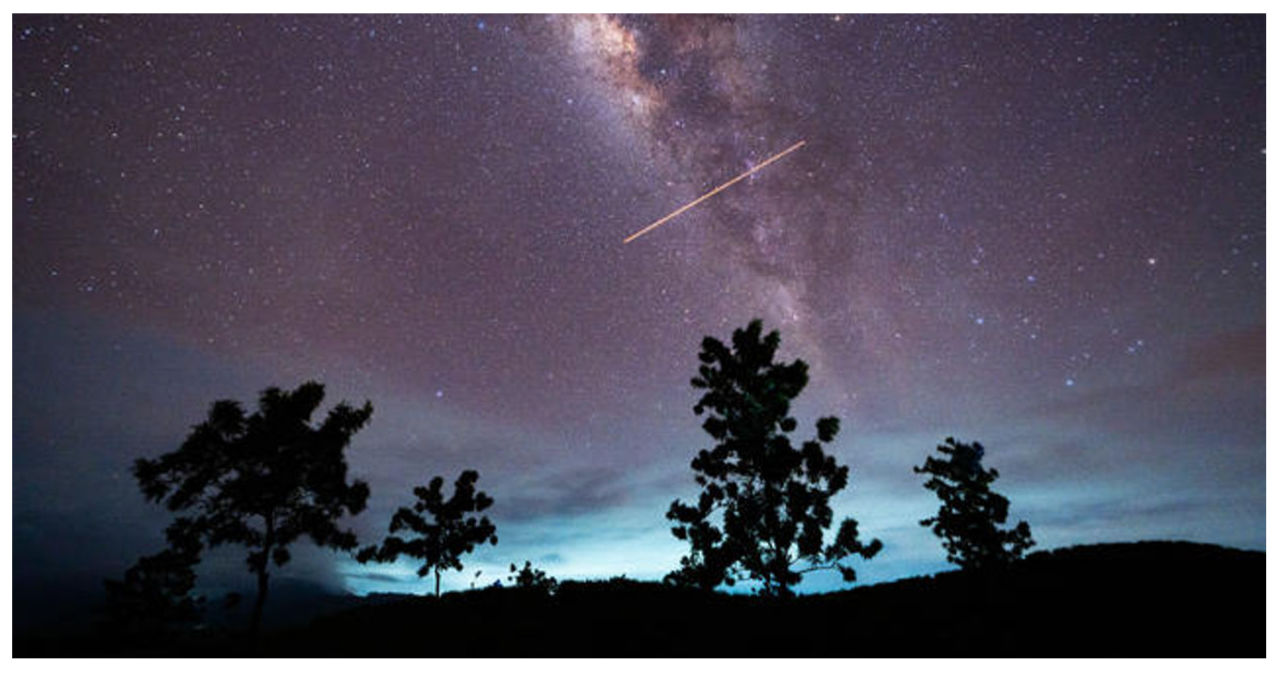Get ready, astronomy fans, for one of the most anticipated meteor showers of the year: the Eta Aquariids are about to reach their peak, as confirmed by NASA.
According to NASA, the Leonid meteor shower will reach its peak overnight on Sunday into Monday. However, meteors from the shower will still be visible throughout the week. This year, the peak coincides with a new moon, resulting in a darker sky and providing a greater opportunity to catch a glimpse of the meteors.
When and where to see the Eta Aquariids meteor shower
The meteor shower can be best observed during the overnight hours of Sunday to Monday. Both the Northern and Southern Hemisphere will have the opportunity to witness this celestial spectacle, with the Southern Hemisphere offering the most optimal viewing experience. In the Southern Hemisphere, viewers can expect to see an impressive display of 40 meteors per hour, while those in the Northern Hemisphere can anticipate a slightly lower count of 10-20 meteors per hour.
In the Northern Hemisphere, Eta Aquarid meteors often take the form of Earthgrazers. These unique meteors appear to skim the Earth’s surface at the horizon, creating a mesmerizing sight for observers.
For the optimal viewing experience, it is recommended to find a location far from any sources of light pollution, such as city lights or streetlights. According to NASA, an ideal position would be lying flat on your back, with your feet directed towards the east. Allow approximately 30 minutes in the darkness for your eyes to fully adjust and perceive the meteors.
According to NASA, it is advised to exercise patience as the show will continue until dawn, providing ample opportunity to witness it firsthand.
The meteor shower will persist until May 27th following its peak.
What makes the Eta Aquariids special?
The Eta Aquariids are famous for their incredible speed. According to NASA, these meteors can move so swiftly that they leave behind glowing trails that can linger in the sky for several seconds to minutes. In fact, the Eta Aquariids travel at an astonishing speed of 44 miles per second.
The Eta Aquariids meteor shower is caused by space debris from Halley’s comet. Every time Halley’s comet returns to the inner solar system, it sheds a layer of ice and rocks into space. This shed space dust gives rise to two meteor showers each year: the Eta Aquarids in May and the Orionids in October.
What are meteor showers?
Meteors, which are space rocks that enter Earth’s atmosphere, can be seen streaking through the sky on a nightly basis. However, meteor showers occur less frequently. During meteor showers, a large number of meteors enter Earth’s atmosphere within a short period of time. As these meteors pass through the atmosphere, they create streaks of light caused by the glowing, hot air they generate.
Some meteors manage to withstand the intense heat as they plummet through the Earth’s atmosphere and make it to the surface. These rare specimens are known as meteorites.



